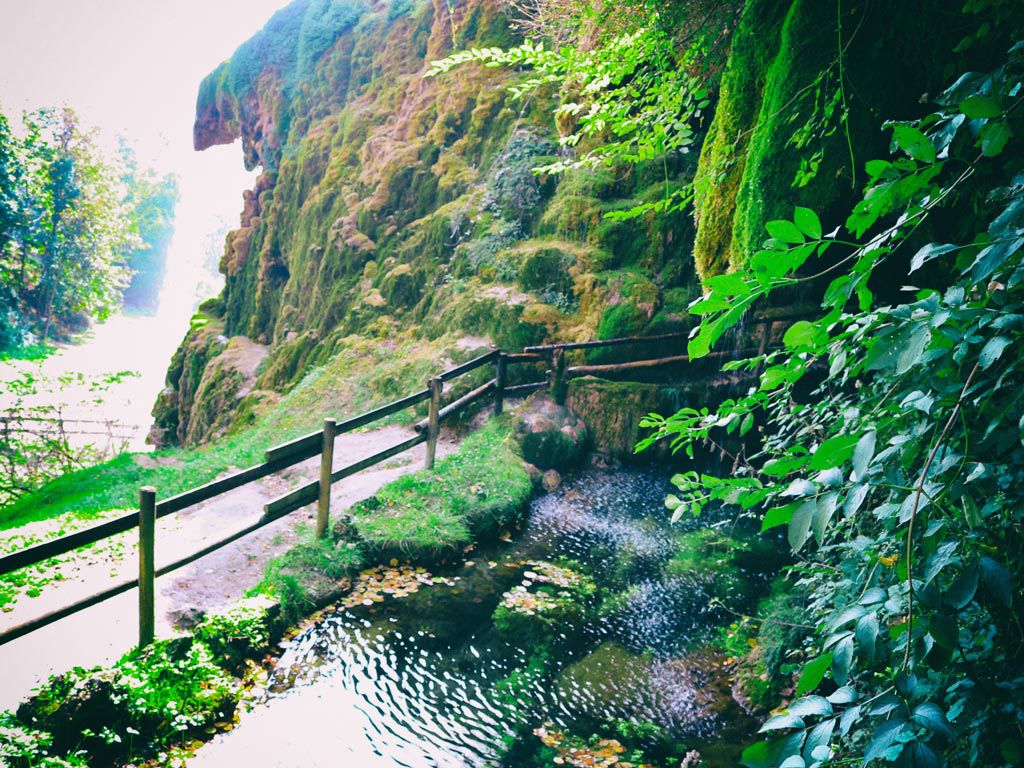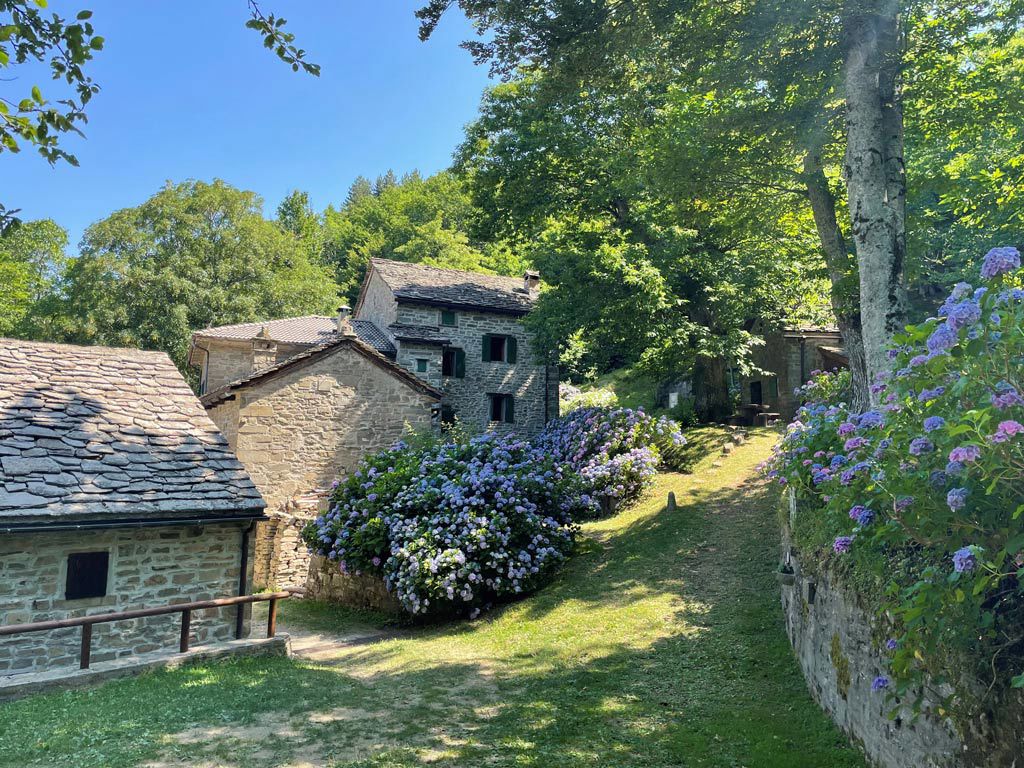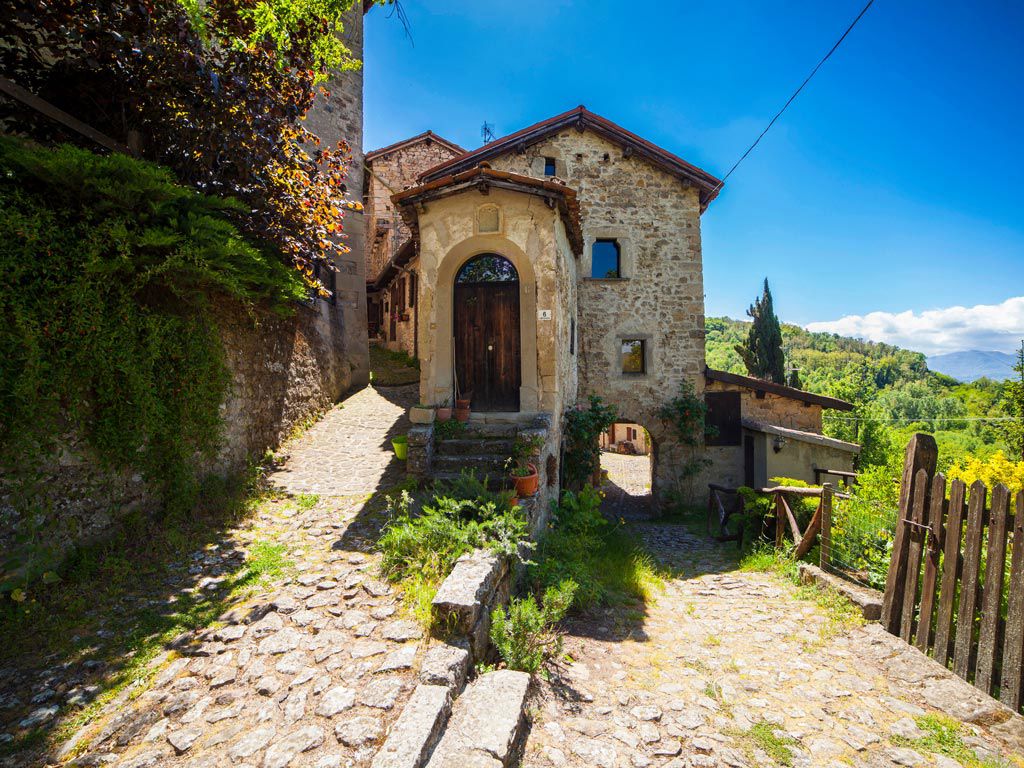

Imbued with a romantic charm in which time flows slowly and peacefully among ancient villages, fortresses and enchanted castles, protagonists of a natural scenario of great flavor, this is the Tuscan-Emilian Apennines.
Every season reserves its surprises!
Autumn, with the warm and enveloping colors of the woods that act as an amphitheater for the small villages of a few ancient houses, whose stone walls exude a simple and authentic life.
In winter, with the snow-capped mountains showing their white coat, while in valley the smoke from the fireplaces warms up the life of the villages and the steam from the thermal waters envelops the course of the river.
Spring, with the luxuriant rebirth of nature, between the bright green of the trees and the cheerful colors of the wildflowers.
Summer, the escape from the city heat for a breath of regenerating air in the shade of the secular trees.
There are many opportunities that the Tuscan-Emilian Apennines offer for those who love naturalistic holidays dedicated to the well-being of body and spirit.
A few kilometers from Bologna, in the Municipality of Castel d'Aiano, you will discover one of the rarest existing karst phenomena. It is the largest primary cave in travertine in Italy and perhaps one of the largest in the world: the Grotta di Labante. With its 51 meters. in length, the cave of Labante is a spectacular natural phenomenon, inside which we discover tunnels and openings dug over the centuries by the natural action of the water that has shaped plants and calcite crystals into the strangest shapes. At the exit, looking up at the natural waterfall that surrounds it, it will not be difficult to discover a wonderful rainbow.

The Borgo di Tresana, with its houses built with stones, immersed in an ancient chestnut and beech wood, is located at an altitude of 930 meters, at the foot of Monte Tresca from which the name perhaps derives. Before reaching the village it is worth taking the Via dei Mulini. The Mulino di Tognarino sul Rio Fantin is made up of a group of houses built around the old mill where the chestnuts from the various dryers in the area were ground. From the Tognarino mill, a path (the 147A) descends towards the Silla river as far as the Porchia lake or further on to the Taccaia mill, passing through the Masseré mill.


The village of La Scola is a place that takes you back in time. All the houses here date back to 1400/1500 and are outstanding examples of medieval architecture. Born as a military district and place of residence and defense of the monastic center of Montovolo, this village remained intact over the centuries, had a great economic and commercial importance, as well as religious, without considering that its territory marked the border with that of the Lombard empire and for this reason it bears witness to the historic struggles between the Franks and the Langobards.
